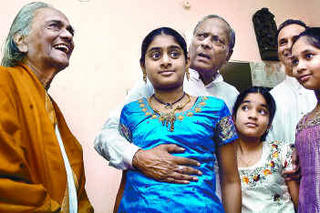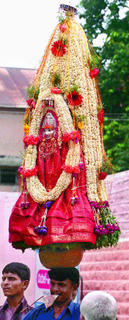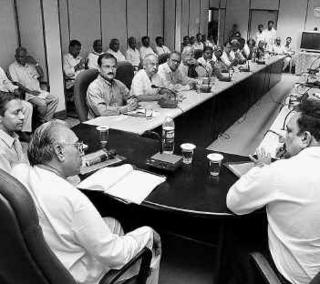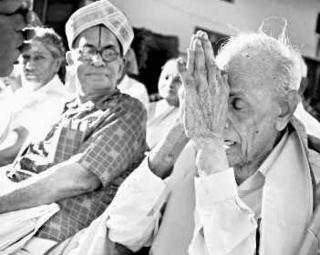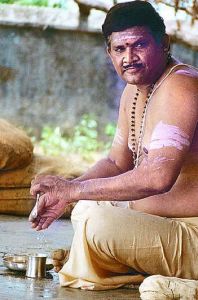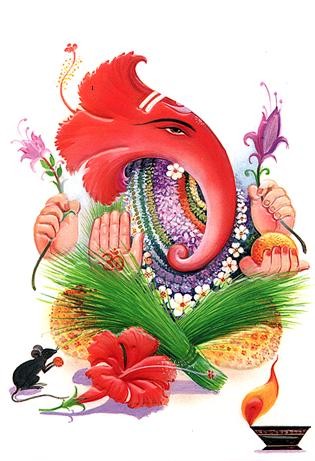The beginning
The struggle for an independent statehood for Telugu speaking people began almost simultaneously with the struggle for independence of India. The main aims of this struggle were to preserve the uniqueness of the Telugu culture as well as create a climate for the overall social and economic development of the Andhras.
When British began ruling India, they divided the country into three main organizational units (presidencies) based at Bombay, Calcutta, and Madras. Each of the presidencies contained people of diverse groups, cultures, religions, and languages. Andhras, Tamils, Kannadigas, and Malayalees were part of the Madras presidency. Andhras were the first to recognize that an independent state, based on linguistic principles, would be the essential first step for development and prosperity.
Guntur and Krishna districts were the birthplace of this movement for a separate state. The Guntur Youth Literary League, established in 1903-04, was an active forum for debate on social, economic, and political issues as well. The participants came to the realization that the establishment of English language schools and the development of infrastructure (railways etc.) in the Tamil speaking areas of the Combined Madras state let the Tamil speaking people gain dominance, and that continuing in a combined state will only perpetuate that dominance. In 1907-08, Telugus from coastal districts met in Bandar with Telugus from Nizam to discuss the need for the two groups to work together to safeguard the common interests of Telugu speaking people. A 1911 map of Teluguland drawn by Unnava Lakshminarayana and Jonnavittula Gurunadham included Telugu speaking areas from the states of Hyderabad, Mysore, Birar, Central Districts, and Orissa in addition to the Telugu speaking areas from Madras state.
In his book "Andhrodyamamu", `Desabhakta' Konda Venkatappayya Pantulu eloquently argued the case for linguistic basis for statehood, citing the Bengali agitation against division and Governor General Harding's 1911 order forming Bihar as a new state (removing it from Calcutta presidency as the Biharis spoke Hindi and not Bengali). In 1912, the congress party units of Godavari, Krishna, and Guntur districts met in Nidadavolu where a resolution for a separate state was introduced from the floor. The backers of the resolution, prevented from debating it for procedural reasons, decided to convene a focused meeting to advance their cause.
Andhra Maha Sabhas
The first Andhra Mahasabha (Convention of Andhras) took place in Bapatla in 1913 with Bayya Venkateswara Sarma as president, and Konda Venkatappayya Pantulu as the convener. Vemavarapu Ramadasu Pantulu introduced the motion for separate statehood. The convention decided to canvass the Telugu people for a year before acting on the motion. A committee consisting of Konda Venkatappayya Pantulu, Bhogaraaju Pattabhi Seetharamayya, Mutnuri Krishna Rao, and Valluru Suryanarayana Rao toured the state discussing the need for an independent state. Bhogaraju Pattabhi Seetharamayya and Kopalle Hanumantha Rao wrote a book "Andhra Rashtramu".
The second Andhra Mahasabha met in Bezawaada in 1914 with Nyaapathi Subba Rao presiding. After much discussion, the convention approved resolutions arguing the case for linguistic states, and suggesting that all Telugu speaking districts from Madras state should be formed into a new state. At the third Andhra Mahasabha presided by Panuganti Raja Ramarayanam in Visakhapatnam, a resolution was passed demanding a separate Andhra State. Since then, that resolution was repeated at every Andhra Mahasabha.
The British government was not against the principle of linguistic based states. When Montague and Chelmsford visited India in 1917 to investigate political reforms, representatives of Andhra Mahasabha pleaded for the formation of Andhra state. As a result, a provision was introduced in the 1919 constitution permitting the Governor General to form a new state, with the approval of the affected legislatures and the India Secretary. Resolutions authorizing the formation of Andhra state were approved three times in Madras state legislature, but, unfortunately, the Governor General did not act on any of them.
Even though the movement did not result in immediate statehood, several important small gains were immediately realized. In 1917, Congress party approved a separate unit for Andhra state and at the national level, Andhras began to be recognized as a separate group and not part of the "Madrasis". Another important achievement was the 1926 establishment of Andhra University at Waltair.
Expectations and disappointments
At the national level too, there was significant initial support for the idea of linguistic based states. Congress officially adopted the idea in 1917. The 1928 Motilal Nehru subcommittee included this principle in their draft for a national constitution. The 1930 Simon commission noted the strong movement for a separate Andhra state but did not expressly support it as Andhras, like the rest of the nation, boycotted the commission. Andhra leaders attempted, without success, to include the issue of statehood at the London round-table conference.
In 1937, leaders from Circar districts and Rayalaseema met at Sreebagh (the residence of Kaseenadhuni Nageswara Rao) and arrived at an agreement regarding the administration of a separate Andhra State. Congress came into power in Madras state, and the legislature approved the resolution proposed by Konda Venkatappayya Pantulu for a separate Andhra state. In 1938, Sarvepalli Radhakrishnan, the President of Andhra Mahasabha, went to London and met with the India Secretary, who could authorize the formation of Andhra state. The Teluguland was abuzz with excitement that statehood was around the corner. However, the start of World War II in 1939 and the subsequent resignation of congress government in Madras put an end to all such hopes.
In 1946, Congress came back to power in Madras state. A National constitutional assembly began deliberations. India became independent on August 15, 1947. Once again Telugus hoped that statehood would be written into the new constitution, but the Dhar commission, asked to investigate the feasibility of the formation of Andhra, Kerala, Karnataka, and Maharashtra states recommended to delay the formation of language based states. The angered Andhras intensified their pressure.
An alarmed congress party authorized the troika of Pundit Nehru, Sardar Patel and Bhogaraaju Pattabhi Seetharamayya, the then congress party president, to revisit the issue. In April 1949, this committee also recommended delaying the formation of language based states. However, they recommended immediate formation of Andhra state, provided Andhras relinquish their claim for the city of Madras. Andhra leaders reluctantly agreed to give up Madras. The central government declared its intention to form the new state by January 26, 1950 (the date for the adoption of the new constitution), and directed the Madras state government to form a commission to oversee the division of the state. The Andhra leaders did not agree to several recommendations of this commission, as they appeared to be against the best interests of Telugus. Subsequently, the central government postponed the formation of the new state. Once again, the Telugu speaking people were disappointed.
Potti Sreeraamulu and the battle for Andhra
In December 1950, Vallabhbhai Patel died. The next September, Jawaharlal Nehru assumed the office of Congress president, in addition to that of Prime Minister of India. In both party and government he was paramount. It was to stay that way for the next decade. Be it non-alignment or centralised planning, the policy that Nehru wanted was generally adopted by the Congress, and by the Government of India as well. But there were exceptions.
One such was the creation of linguistic states. In private, Nehru deplored the idea. In public, he said he would agree to their creation only if there was consensus among all parties concerned. However, most Congressmen who spoke Marathi insisted on a separate Maharashtra State. Party members who claimed Gujarati as a mother tongue wanted likewise to have a province of their own. Similar were the aspirations of Congressmen who spoke Kannada, Malayalam, or Oriya. These people all wanted the creation of states based on their own language, and they wanted them as soon as possible.
Without question, the most vigorous movement for linguistic autonomy was the handiwork of the Andhras.
In August 1951, Swami Seetharam (Gollapudi Seetharama Sastry) began a fast demanding the immediate formation of Andhra state, but terminated it at the request of Vinoba Bhave. All political parties contesting the 1952 interim elections expressed their support for the formation of Andhra state. Still, the central government would not relent.
The agitating Andhras had two pet hates: the Prime Minister, and the Chief Minister of Madras, C. Rajagopalachari. Both had gone on record as saying that they did not think that the immediate creation of Andhra was a good idea. Both were clear that even if, against their will, the state came into being, the city of Madras would not be a part of it. This enraged the Andhras, who had a strong demographic and economic presence in the city, and who believed that they had as good a claim on it as the Tamils.
On May 22, 1952, Nehru told Parliament of how "for some years now our foremost efforts have been directed to the consolidation of India. Personally, I would look upon anything that did not help this process of consolidation as undesirable. Even though the formation of linguistic provinces may be desirable in some cases, this would obviously be the wrong time. When the right time comes, let us have them by all means".
As K.V. Narayana Rao has written, "this attitude of Nehru appeared too vague and evasive to the Andhras. Nobody knew what the right time was and when it would come". Impatient for an answer, the Andhras intensified their protest. On October 19, 1952, a man named Potti Sriramulu began a fast-unto-death in Madras. He had the blessings of Swami Sitaram, and of thousands of other Telugu speaking people besides.
Born in an orthodox household in Madras in 1901, Sriramulu had studied Sanitary Engineering and then took employment in the railways. In 1930 he resigned his post to join the Salt Satyagraha. Later, he spent some time at the Sabarmati Ashram. Later still, he spent 18 months in jail as part of the individual satyagraha campaign of 1940-41.
A hagiographic study published in 1985 by the "Committee for History of Andhra Movement" had this to say about the relationship between Potti Sriramulu and Mahatma Gandhi: "Sreeramulu's stay at Sabarmati was epoch-making. For here was a seeker full of love and humility, all service and all sacrifice for his fellow-humanity; and here also was a guru, the world-teacher, equally full of affection, truth, ahimsa and kinship with Daridra Narayana or the suffering poor. While at Sabarmati, Sreeramulu ... did his tasks with cheer and devotion, and won the affection of the inmates and the approbation of the Kulapati (Gandhi)."
Gandhi did regard Sriramulu with affection but also, it must be said, with a certain exasperation. On November 25, 1946 the disciple had begun a fast-unto-death to demand the opening of all temples in Madras province to Harijans. Other Congressmen, their minds more focussed on the impending freedom of India, urged him to desist. When he refused, they approached Gandhi, who persuaded him to abandon the fast. The Mahatma then wrote to the respected Andhra Congressman, T. Prakasam, that he was "glad that the fast of Sreeramulu ended in the happy manner you describe. He had sent me a telegram immediately after he broke his fast. I know he is a solid worker, though a little eccentric".
"Eccentric" is a word capacious enough to also mean "determined". This Potti Sriramulu certainly was. The fast of 1946 he had called off at Gandhi's instance. But in 1952 the Mahatma was dead; in any case, Andhra meant more to Sriramulu than the Harijans once had. This fast he would carry out till the end, or until the Government of India relented.
On December 3, Nehru wrote to Rajagopalachari: "Some kind of fast is going on for the Andhra Province and I get frantic telegrams. I am totally unmoved by this and I propose to ignore it completely". By this time Sriramulu had not eaten for six weeks. As his ordeal went on, support for the cause grew. Hartals were called in many towns. The sociologist Andre Beteille, travelling to Madras from Calcutta at this time, recalls having his train stopped at Vizag by an angry mob shouting slogans against Rajaji and Nehru.
Nehru now recognised the force of popular sentiment. On December 12, he wrote again to Rajaji, suggesting that the time had come to accept the Andhra demand. "Otherwise complete frustration will grow among the Andhras, and we will not be able to catch up with it". But the formal announcement was delayed, and Sriramulu continued his fast. On the 15th he died. The next day all hell broke loose. Government offices were attacked, and trains stopped and defaced. The damage to state property ran into crores of rupees. Several protesters were killed in police firings. On the 16th, Nehru made a statement saying a state of Andhra would come into being, but its boundaries would be decided by an independent Commission. In March 1953, the Telugu districts of Madras were identified for separation.
AndhravataraNamu
On October 1, 1953, the new Andhra state was formed with Kurnool as its capital and Tangutoori Prakasam Pantulu as the chief minister. This was, however, an incomplete victory for Andhras. This state did not include the Telugu speaking areas of the Hyderabad State. Another three years were to pass before an integrated Telugu speaking state, "Andhra Pradesh" could be born on November 1, 1956.
A slight starts a movement
Telugu speaking people realized their dream of a state of their own on October 1, 1953 with the formation of Andhra state. This state, however, did not include the Telugu speaking areas in the formerly princely state of Hyderabad. Another three years were to pass before the dream of having one state, Visalandhra, for all Telugu speaking people could be realized.
The princely state of Hyderabad (Nizam) comprised of three linguistic regions: Telugu-speaking Telangana, Kannada-speaking Karnataka, and the Marathi-speaking Marathwada. Though Telangana accounted for more than half the land and half the people of Hyderabad, Telugu language and Telugu speaking people were getting second class treatment. Telangana was relatively backward compared to the other two regions. Literacy was about three percent in the Telangana region and very few Telugus could attain a position of significance in the Nizam government.
A seemingly trivial incident at the Nizam State Social Conference held in Hyderabad in November 1921 sparked the beginning of Andhra Movement in Telangana. The proceedings of the conference were in Urdu, Marathi, and English. A.V. Rama Rao, a lawyer, rose to speak in Telugu on a resolution, and the audience, mainly composed of Marathis unwilling to hear Telugu, shouted him down. That such a thing could happen in the premier city of Telangana upset the Telugus in the audience. On the night of November 12, 1921, an Andhra Jana Sangham was formed with eleven members, and on April 4, 1922, a constitution was adapted.
This association later led to Andhra Jana Kendra Sangham which held its first Conference at Hyderabad in 1923. In the early days, the association concentrated on opening schools, developing libraries, and collect materials and publish the Telugu history relating to Hyderabad state. The Sangham was instrumental in the local merchants organizing themselves to rid themselves of government excesses. The first conference of the (Nizam) Andhra Maha Sabha (NAMS) was organized in 1930 at Hyderabad. The efforts of Andhra Maha Sabha prompted the people of Marathwada to host the first Maharashtra Parishad conference in 1937 and the people of Karnataka to establish the Karnataka Parishad the same year.
There was an attempt to establish a Congress Party Unit in Hyderabad in 1938. When the Nizam government banned the Congress party, the Congress party workers began to work in the regional movement. The newly formed Communist party also began to build up a peasants' movement through the Andhra Maha Sabha. The communists under the leadership of Ravi Narayana Reddy became more powerful in the NAMS than the congressmen led by K.V. Ranga Reddy. By 1944, the communist domination of NAMS was complete. The non-communists attempted to conduct their own Andhra Mala Sabhas, but this group eventually became a unit of the Congress Party when the ban on Congress was lifted in 1945.
Visalandhra Movement
The Andhras from coastal districts campaigning for a separate state for Telugus have always dreamed of one state, 'Visalandhra' comprising of all the contiguous Telugu areas. However, the leaders of Andhra movement in Telangana during the early days were not that interested in Visalandhra. Many of the nationally prominent Congress leaders were also not in favor of this single state. The Communist party, however, favored a single state for Telugu speaking people.
In September 1948, the princely State of Hyderabad acceded to the Indian Union and became a regular state. After this, the Visalandhra movement gained momentum. Ayyadevara Kaleswara Rao, one of the foremost working for Visalandhra, met with local Congress leaders of Hyderabad. They decided to work for the disintegration of Hyderabad and formation of Visalandhra, and the Hyderabad Provincial Congress Committee (HPCC) resolved in favor of Visalandhra. Kaleswara Rao formed Visalandhra Maha Sabha in Vijayawada on November 26, 1949. Even as the central government was resisting the separation of Andhra state from Madras, the demand for Visalandhra continued to grow. In 1950, The Andhra Provincial Congress Committee also expressed its support for the State of Visalandhra with Hyderabad as its capital. Prime Minister Nehru expressed his opposition to the disintegration of the Hyderabad province.
In December 1952, the Government of India decided to form an Andhra State. This intensified the demands for other linguistic states, particularly Karnataka. In December 1953, the central government formed a State Reorganization Commission (SRC) with Fazl Ali as Chairman and Hriday Nath Kunzru and K.M. Panikkar as members to look into the question of reorganization of states.
Two Telugu States?
Once the idea of disintegration of Hyderabad State became a realistic possibility, some of the leaders of Telangana began to have second thoughts about Visalandhra. Some of them began supporting the idea of two Telugu states. K.V. Rangareddi, who became the President of Hyderabad Provincial Congress Committee, began opposing Visalandhra. While the Marathwada and Karnataka units of HPCC supported one state for all the people speaking their language, the Telangana unit supported a resolution moved by M. Chenna Reddy recommending the formation of two Telugu States. Within the Praja Socialist party, the resolution to support Visalandhra passed with a majority of only two votes. Some of the top leaders of Telangana Communist party were also against Visalandhra. The main reason for resisting Visalandhra was a fear that in the combined state, the people from Andhra state may dominate politically and financially and that the education and employment opportunities for the locals would diminish. However, the Visalandhra, Mahasabha under the leadership of Devulapalli Ramanuja Rao and Mir Ahmed Ali Khan continued to work towards a grass roots movement supporting Visalandhra and was supported by the people and political leaders of Andhra state.
When the SRC visited Hyderabad, it was met with people supporting Visalandhra, people supporting two Telugu states, and people opposing the disintegration of Hyderabad State on linguistic basis. The last group was small in number. In October 1955, the SRC finally recommended the disintegration of Hyderabad State, formation of a separate state for people of Telangana (under the name Hyderabad State) with a provision that the two Telugu states to unite into one after five years if two thirds of legislators in both states desire so.
The Chief Ministers of Hyderabad and Andhra opposed the SRC recommendations and urged immediate formation of Visalandhra. Both the opponents and supporters of Visalandhra continued their campaigns. Because of the opposition of a large number of the Telangana congress leaders, the Hyderabad Assembly adjourned without taking a vote on the SRC recommendations, though 103 of the 174 members spoke in favor of Visalandhra. The central government postponed its decision.
The Gentlemen's Agreement
Leaders of Andhra, aware of the concerns of the people of Telangana, were trying to assure them of safeguarding Telangana interests in matters of development, education, and employment. Finally, the central Congress leaders began supporting the formation of Visalandhra. Nehru, who was originally against the break-up of Hyderabad State, converted to Visalandhra and prevailed over Azad, the only member of Congress Working Committee opposed to merging Andhra and Telangana.
Once the Congress High Command's support for Visalandhra became known, the leaders of Telangana wanted a number of safeguards. Representatives of congress party from Hyderabad and Andhra States began meeting in New Delhi at Hyderabad House, the Nizam's guest house. Participants in the discussion included B. Ramakrishna Rao, Dr. Chenna Reddy, K.V. Ranga Reddy and J.V. Narasinga Rao from Telangana, and B. Gopala Reddy, A. Satyannarayana Raju, N. Sanjeeva Reddy, and G. Latchanna from Andhra. A 'gentlemen's agreement' on safeguards was reached.
Two points of contention remained. The Telangana delegates wanted the new state to be called Andhra-Telangana. Finally, the name Andhra Pradesh was agreed upon. The second point of contention was the location of High Court. The Telangana delegates wanted a single location for the High Court in Hyderabad. The Andhra delegates wanted a principal seat of High Court in Hyderabad with a bench in Guntur. Finally, it was decided to locate the High Court in Hyderabad and a bench to be established later, if so desired.
Finally, a Unified Telugu State
B. Gopala Reddy and N. Sanjeeva Reddy vied for the Chief Ministership and the latter won in an informal vote. K.V. Ranga Reddy became the Deputy Chief Minister.
The new State of Andhra Pradesh, comprising of most contiguous Telugu speaking areas was inaugurated on November 1, 1956 marking the end of a long struggle for a unified Telugu state and the beginning of a new era.


